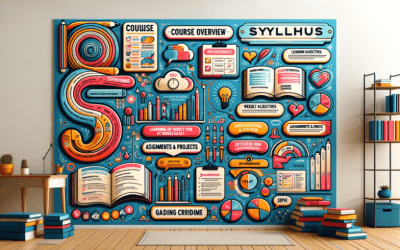Drive-Thru Pedagogy
Pick up something practical.
Scaffolding Success: The Instructor’s Role in Facilitating Online Discussions
Learning is often described as a social process that requires regular and substantive interactions. Thus, when learning occurs in a location at a distance from one’s peers and instructor through a computer-mediated experience, the course must still be facilitated in a way that creates and fosters socialization. Drive-Thru Pedagogy Blog Pick up something practical. Scaffolding Success: The...
Six Essentials for Online Group Assignments
Learning is often enhanced when it is collaborative and social. Incorporating group assignments into your course is one way to increase student collaboration. However, group assignments can be difficult to facilitate, especially in an online course where you and your students are physically separated from one another. Despite these challenges, online courses rich in student interactivity...
Active Listening to Enhance Class Discussion
Have you ever had a class discussion filled with good ideas that still felt monotonous? A moment when a student repeats, without seeming to realize it, an idea someone already shared in class? Is it important for you to move toward higher order thinking in class discussion? Consider active listening: how students intentionally engage with classmates when they are not talking or presenting. The...
Small Steps Towards Student Self-Efficacy
Self-efficacy influences the tasks individuals choose to do, their approach to completing tasks, and how they feel about those tasks. First described by Albert Bandura (1977), self-efficacy refers to an individual’s belief in their ability to succeed in a particular situation or to accomplish a specific task. For example, it is my belief that I can perform the functions of my role as an educator...
A Guide to Transparent Assignment Design
Students might find themselves grappling with the mysteries of an assignment, wondering what an instructor’s directions mean, the assignment’s purpose, and its role in the larger context of a course. Instructors should design assignments to ensure students actively engage with course content and develop essential skills. Transparent assignment design is a framework for structuring assignments to...
The Visual Syllabus: A Fresh Approach to Simplified Course Communication
Last semester I came across the idea of a visual syllabus that a small handful of faculty had developed for their courses and were posting about it on Twitter. It has not escaped me that Twitter is a controversial platform these days. However, it offers a great way for me to interact with professionals in academia in my own field and beyond. My network on Twitter allows me to find out in...
Have additional questions?
Connect with our team
Whether you have a specific or general question, please reach out and one of our team members will be happy to assist you. You can expect a response within 24 - 72 hours. Our normal business hours are from 8 am to 5 pm, Monday through Friday. We look forward to hearing from you!






